Flavorful Chilean Sea Bass En Papillote: A Dreamy Steamed Recipe
Cooking chilean sea bass en papillote brings a touch of culinary magic to your kitchen.
Delicate fish nestles within a parchment parcel, creating an aromatic steam bath that intensifies flavors.
Moisture locks in every subtle nuance of the tender seafood.
Herbs and seasonings dance around the delicate white flesh, promising a memorable dining experience.
Mediterranean chefs have long adored this technique for its simplicity and elegance.
Unwrapping the parchment reveals a fragrant burst of ocean-fresh goodness that feels like a personal culinary celebration.
Prepare to be amazed by this effortless yet sophisticated dish that turns an ordinary meal into an extraordinary feast.
Chilean Sea Bass En Papillote: A Tasty Meal
Ingredients Needed to Cook Chilean Sea Bass
Main Ingredients:Produce and Herbs:Pantry and Flavor Enhancers:How to Prepare Chilean Sea Bass En Papillote
Step 1: Warm Up The Cooking Space
Crank the oven dial to 400 degrees Fahrenheit, getting your kitchen ready for a delicious seafood adventure.
Step 2: Create Seafood Parcels
Grab two large parchment paper sheets and place them on a baking sheet.
Center a Chilean sea bass filet on each paper and sprinkle with salt and pepper. Then add these delightful ingredients:Splash a generous amount of dry white wine over each filet to infuse extra flavor.
Step 3: Wrap And Seal The Treasure
Gently fold the parchment paper over the fish, creating a tightly sealed packet. Crimp and fold the edges to ensure no steam escapes.
The goal is a beautiful, self-contained cooking envelope.
Step 4: Bake To Perfection
Slide the baking sheet into the hot oven.
Let the fish cook for 20 to 25 minutes until the filets become wonderfully flaky. Thicker cuts might need a few extra minutes.
Step 5: Serve With Caution
When removing from the oven, be mindful of the hot steam inside the parchment packets. Open carefully to release the aromatic seafood surprise.
Tips to Perfect Chilean Sea Bass in a Bag
Variations to Change Up Chilean Sea Bass Dish
Pairing Ideas to Serve With Chilean Sea Bass
Storage Instructions for Chilean Sea Bass
FAQs
Chilean sea bass is ideal, but you can substitute with other delicate white fish like cod, halibut, or tilapia that cook quickly and stay moist.
No, it’s simple! Just fold the edges tightly to create a sealed packet that traps steam and keeps the fish tender during cooking.
Yes, you can assemble the fish packets earlier in the day and refrigerate them, then bake just before serving. Just add a few extra minutes to the cooking time if they’re cold from the refrigerator.
Print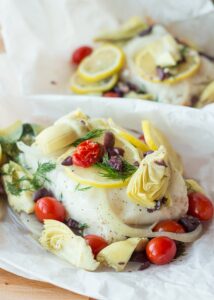
Chilean Sea Bass In A Bag (En Papillote) Recipe
- Total Time: 40 minutes
- Yield: 2 1x
Description
Sea bass en papillote showcases delicate flavors through French cooking techniques. Elegant parchment parcels seal in moisture, creating a succulent dish packed with Mediterranean herbs and lemon zest for a memorable dining experience.
Ingredients
- 2 filets (6 oz. / 170 g) Chilean Sea Bass
- 1/4 cup (60 ml) dry white wine
- 1/2 yellow onion, thinly sliced
- 1 cup (150 g) artichoke hearts, quartered
- 1/2 cup (100 g) cherry tomatoes, whole
- 2 tablespoons (30 ml) kalmata olives, chopped
- 1/2 lemon, thinly sliced
- 1/4 cup (15 g) fresh dill sprigs
- salt and pepper, to taste
- 2 large sheets of parchment paper
Instructions
- Prepare the oven environment by heating to 400°F, ensuring a consistent temperature for optimal cooking.
- Create individual cooking pouches using parchment paper sheets placed on a baking tray, positioning each sea bass filet centrally with precision.
- Season the filets with salt and pepper, then artfully distribute lemon slices, artichoke hearts, olives, tomatoes, onion, and dill sprigs across the surface of each piece of fish.
- Enhance the flavor profile by delicately streaming dry white wine over each filet, allowing the liquid to infuse the ingredients.
- Expertly fold the parchment paper, creating sealed packets that will trap moisture and intensify the cooking process, ensuring no steam can escape during baking.
- Transfer the baking sheet with sealed pouches into the preheated oven, allowing the fish to cook for approximately 20-25 minutes until the flesh becomes tender and flakes easily.
- Exercise caution when opening the parchment packets, as trapped steam will release quickly and can cause potential burns.
- Serve immediately to preserve the delicate texture and vibrant flavors of the Chilean sea bass.
Notes
- Seal the parchment packets tightly to trap moisture and infuse flavors deeply into the delicate sea bass.
- Use fresh, high-quality white wine to enhance the subtle flavors of the fish and create a light, aromatic steam.
- Adjust cooking time based on the thickness of the filet, ensuring the fish remains tender and flaky without overcooking.
- For gluten-free or low-carb diets, skip any additional sides and focus on the protein-rich sea bass with its vibrant Mediterranean-inspired vegetable medley.
- Prep Time: 15 minutes
- Cook Time: 25 minutes
- Category: Lunch, Dinner
- Method: Baking
- Cuisine: Chilean
Nutrition
- Serving Size: 2
- Calories: 275 kcal
- Sugar: 3 g
- Sodium: 350 mg
- Fat: 14 g
- Saturated Fat: 3 g
- Unsaturated Fat: 10 g
- Trans Fat: 0 g
- Carbohydrates: 8 g
- Fiber: 3 g
- Protein: 30 g
- Cholesterol: 70 mg

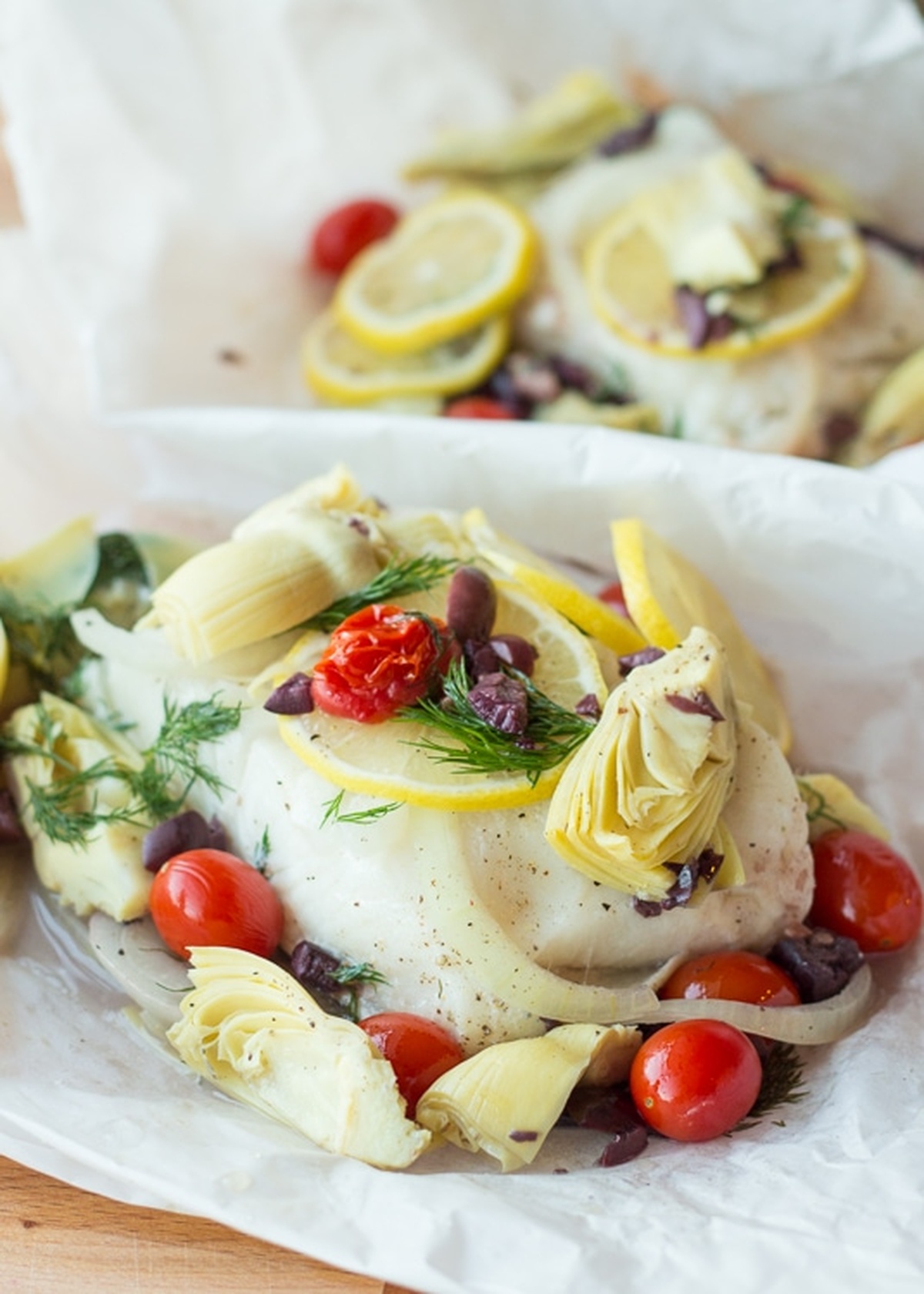
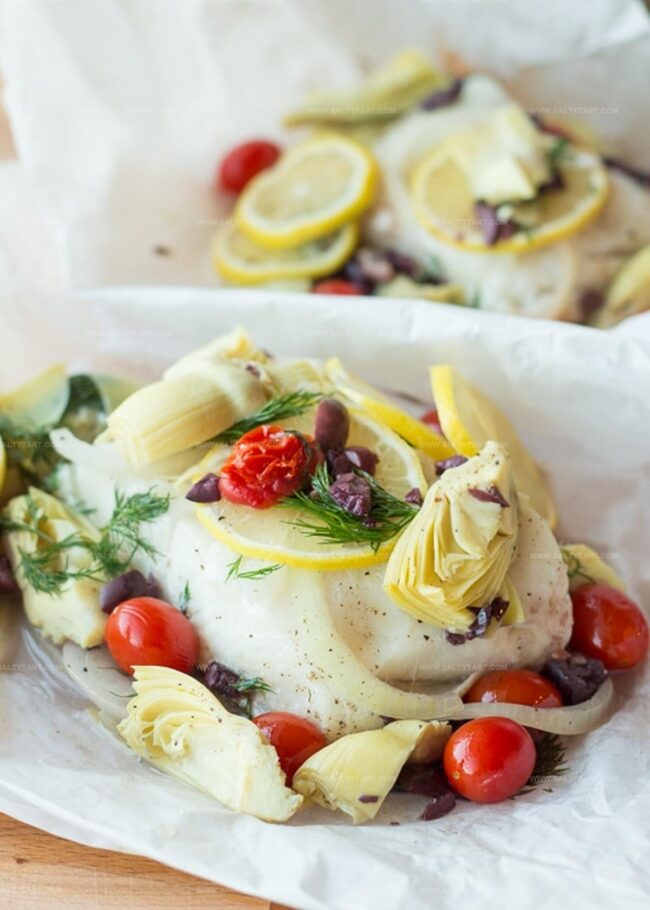
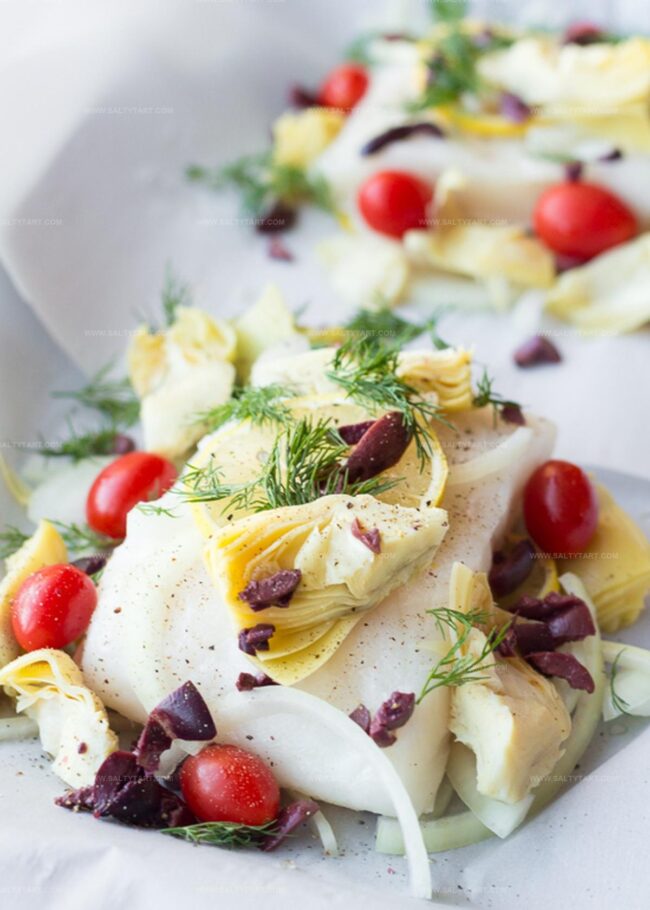
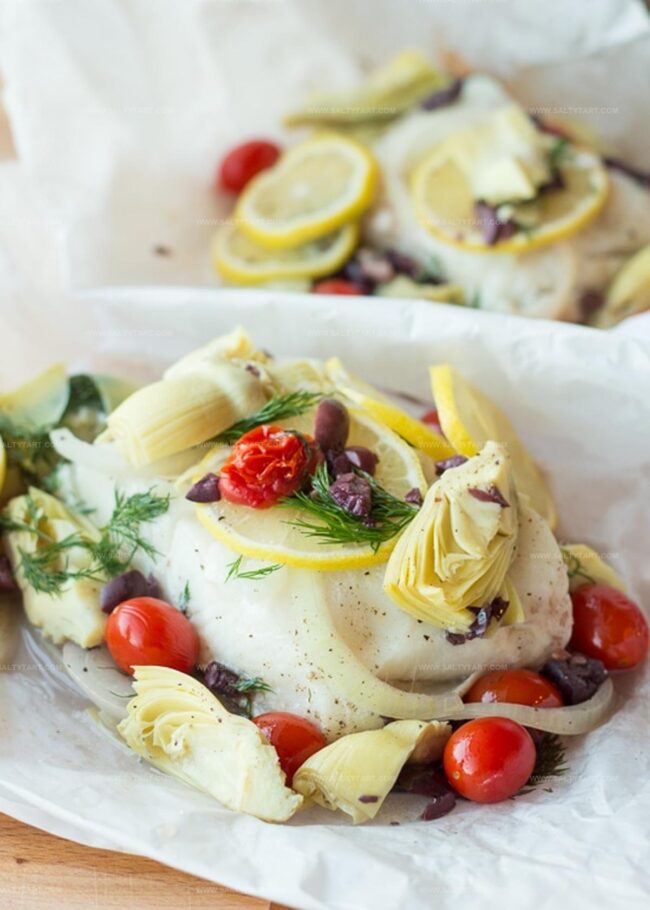

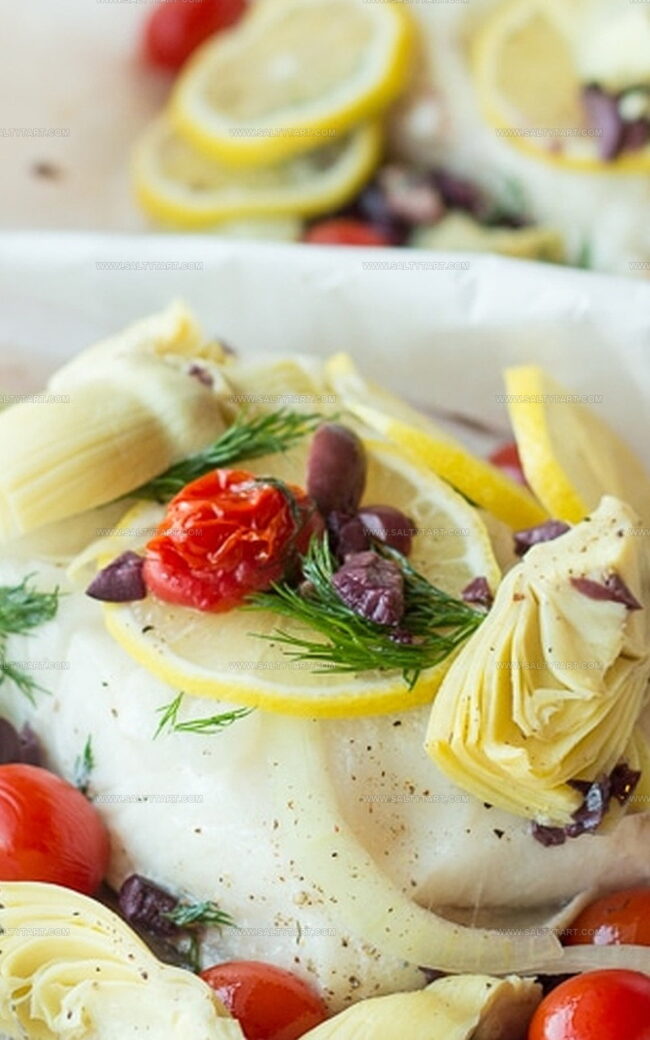
Mike Reynolds
Founder & Recipe Developer
Expertise
Farm-to-table cuisine, Seasonal recipe development, Sustainable cooking techniques, Food photography
Education
Asheville-Buncombe Technical Community College (A-B Tech)
Associate Degree in Culinary Arts
Mike studied culinary arts with a strong focus on farm-to-table principles and sustainable cooking. His training emphasized the importance of fresh, local ingredients and environmentally responsible practices in the kitchen.
Mike’s food journey began deep in the Blue Ridge Mountains, where weekends at farmers’ markets and home-cooked meals sparked a lifelong obsession with simple, seasonal eating.
After earning his Associate Degree in Culinary Arts from Asheville-Buncombe Technical Community College, he set out to bring farm-to-table cooking into everyday kitchens, without the fuss.
Mike’s philosophy is all about keeping it fresh, unfussy, and full of heart. When he’s not crafting new single-serving recipes, he’s hiking mountain trails, chatting with local farmers, or experimenting with wild ingredients in his backyard kitchen.